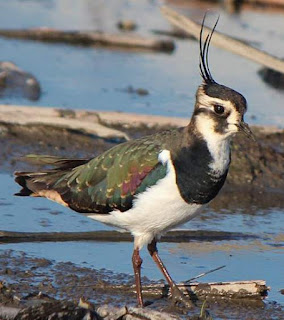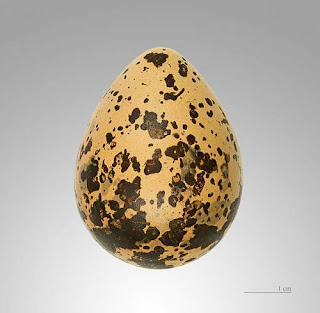The oriental pratincole (Glareola maldivarum) belongs to the family of pratincoles and coursers, Glareolidae.
The oriental pratincole species are distributed in Russia, Mongolia, China, North Korea, Japan, Taiwan, Pakistan, India, Sri Lanka, Bangladesh, southeast Asia and Australia. These pratincole species have adapted to aerial feeding. These pratincoles are monotypic species.
Oriental pratincole - Overview
- Scientific name: Glareola maldivarum
- Species author: Forster, 1795
- Synonyms/Protonym: Glareola (Pratincola) Maldivarum J. R. Forster, 1795
- Family: Glareolidae › Charadriiformes › Aves › Chordata › Animalia
- Vernacular names: English: Oriental pratincole, Chinese: 普通燕鸻, French: Glaréole orientale, German: Orientbrachschwalbe, Spanish: Canastera oriental, Russian: Восточая тиркушка, Japanese: ツバメチドリ, Indonesian: Burung Terik Asia
- Other names: Eastern Collared Pratincole, Eastern Pratincole, Indian Pratincole
- Distribution: Russia, Mongolia, China, North Korea, Japan, Taiwan, Pakistan, India, Sri Lanka, Bangladesh, southeast Asia, Australia
- Diet and feeding habits: flying insects, locust, grasshoppers, crickets, beetles, winged ants and termites
- IUCN status listing: Least Concern (LC)
Appearance, physical description and identification
The oriental pratincole (Glareola maldivarum) is a medium-sized shorebird, measuring 23 to 25 cm in length and weighing 60 to 100 grams. Both the sexes look alike.The breeding oriental pratincole has dark olive-brown crown, nape, back and upper rump. The neck is pale olive buff. The lower rump, uppertail coverts and tail are white. There is a dark gray subterminal band across the tail.
The secondaries and the outer wing are dark blackish brown. The secondary coverts are dark olive-brown. The chin and throat are creamy buff.
A black line runs down from below the eye, encircling the throat and separating it from the olive buff upper breast. The lower breast, belly and flanks are orange buff. The rest of the oriental pratincole underparts are white.
In the non-breeding adult pratincole, the upperparts are entirely dark brownish olive. The rest of the plumage is paler. The juveniles appear similar to non-breeding adults; but the crown, nape and neck are mottled and streaked with dark brown.
The bill of oriental pratincole is short and black. The gape and the base of the mandible are red. The gape and the bill base become pale pink in non-breeding adult. The irises are dark brown. The legs and feet are grayish brown. The oriental pratincole call is a sharp “kyik” sound.
 |
| 1.Birds of India - Image of Oriental pratincole - Glareola maldivarum by JJ Harrison |
 |
| 2.Indian birds - Picture of Oriental pratincole - Glareola maldivarum by Alnus |
 |
| 3.Birds of India - Photo of Oriental pratincole - Glareola maldivarum by David Cook |
Origin, geographical range and distribution
The oriental pratincole species are distributed in Asia and Australia.Vagrant birds have been observed in Cocos (Keeling) Islands (to Australia), New Zealand, Marshall Islands, United Kingdom, Cyprus, Egypt, Israel, United Arab Emirates, Mauritius and USA.
The breeding populations of oriental pratincole species are distributed in southeast Russia, eastern Mongolia, North Korea, eastern China, Taiwan, southern Japan, Philippines, Vietnam, Laos, Cambodia, Thailand, Myanmar, Bangladesh, India and Pakistan.
The wintering oriental pratincole populations are found in India, Sri Lanka, Maldives, Andaman and Nicobar Islands (India), Myanmar, Vietnam, Malaysia, Brunei, Indonesia, Timor Island, New Guinea and Australia.
In India, these oriental pratincole species are distributed in Andaman and Nicobar Islands, Tripura, Mizoram, West Bengal, Odisha, Uttar Pradesh, Uttarakhand, Haryana, Punjab, Madhya Pradesh, Gujarat, Telangana and Kerala.
The Important Bird and Biodiversity Areas (IBA) of the oriental pratincole species in Australia are Eighty Mile Beach and Mandora Marsh and Anna Plains. The IBA in Vietnam is U Minh Thuong.
Ecosystem and habitat
These oriental pratincole species do not normally occur in forests. These species occur in altitudes from 0 to 500 meters.The artificial ecosystems of these pratincole species include agricultural lands, pasture lands, irrigated lands, rice fields, ploughed fields and seasonally flooded fields.
The natural ecosystems of these oriental pratincole species include tropical and subtropical grasslands, temperate grasslands, dry floodplains, intertidal mudflats, sandy, pebble and shingle shorelines, freshwater lakes, marine lakes, brackish water lakes and steppes.
Diet and feeding behavior
The diet of the oriental pratincole is mostly flying insects. Locust, grasshoppers, crickets, beetles, moths, dragon flies, winged ants and termites, flies, bees and wasps are their primary food.These birds have short bills and are adapted for aerial feeding. They also feed on the ground. Their flight is fast with many twists and turns to pursue their prey. These birds actively feed in the morning and the evening, resting in the warmest part of the day.
The oriental pratincoles have been observed to move in flocks, in search of swarms of locusts or other insects. They ascend thermals near cyclonic storms or fires and feed on the insects sucked up by the thermal winds.
Reproduction and breeding habits
The breeding season of these oriental pratincole species in most of its range is from April to June. These birds are mostly seasonally monogamous. They breed in loose colonies.The nesting sites of oriental pratincole include open grassland plains, recently burnt grasslands, stubble fields, edge of wetlands such as lakes and rivers, rice fields, grassy islands and reclaimed lands.
The oriental pratincole nest is a shallow ground scrape or a natural depression. The typical clutch usually contains two or three eggs. Both the parents incubate the eggs for nearly three weeks. The hatchlings are precocial and are fed by the parents.
Migration and movement patterns
The oriental pratincole species are partially migrant birds.The oriental pratincole breed in Russia, Mongolia, China, North Korea, Japan, Taiwan, Pakistan, India and parts of southeast Asia.
They leave their breeding grounds in about September and migrate to Andaman and Nicobar Islands (India), Indonesia, New Guinea and Australia for wintering.
Some of the oriental pratincole populations in Sri Lanka, India (West Bengal), southern Myanmar and southern Vietnam are resident.
Post breeding, the juveniles may disperse and establish in new locations within the range. They may make local movements for feeding and breeding within their range.
Conservation and survival
The global population size of the oriental pratincole (Glareola maldivarum) is estimated to number 2,900,000 to 3,000,000 individual birds. The overall population trend of these pratincole species is reported to be decreasing.Throughout its range this pratincole species is reported to be locally common to rare. The generation length is 7.3 years. Its distribution size is about 25,400,000 sq.km.
Hunting pressure, habitat loss and degradation are the main threats that may endanger the survival of these pratincole species.
IUCN and CITES status
The oriental pratincole (Glareola maldivarum) does not approach the thresholds for being Vulnerable, either under the range size criterion, or under the population trend criterion or under the population size criterion.The IUCN (International Union for Conservation of Nature) has categorized and evaluated the species and has listed it as of "Least Concern". The CITES (Convention on International Trade in Endangered Species of Wild Fauna and Flora) status is ‘Not Evaluated’ for oriental pratincole (Glareola maldivarum).
1.Oriental pratincole photo source: https://en.wikipedia.org/wiki/File:Glareola_maldivarum_-_Beung_Borapet.jpg (cropped)
Photo author: JJ Harrison | License: CC BY-SA 3.0
2.Photo source: https://commons.wikimedia.org/wiki/File:Pratincole_8175.jpg (cropped)
Photo author: Alnus | License: CC BY-SA 3.0
3.Photo source: https://www.flickr.com/photos/kookr/16178124374/ (cropped)
Photo author: David Cook | License: CC BY-NC 2.0 as on 6/30/17
Current topic in Birds of India: Oriental pratincole - Glareola maldivarum.






















